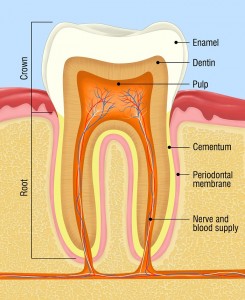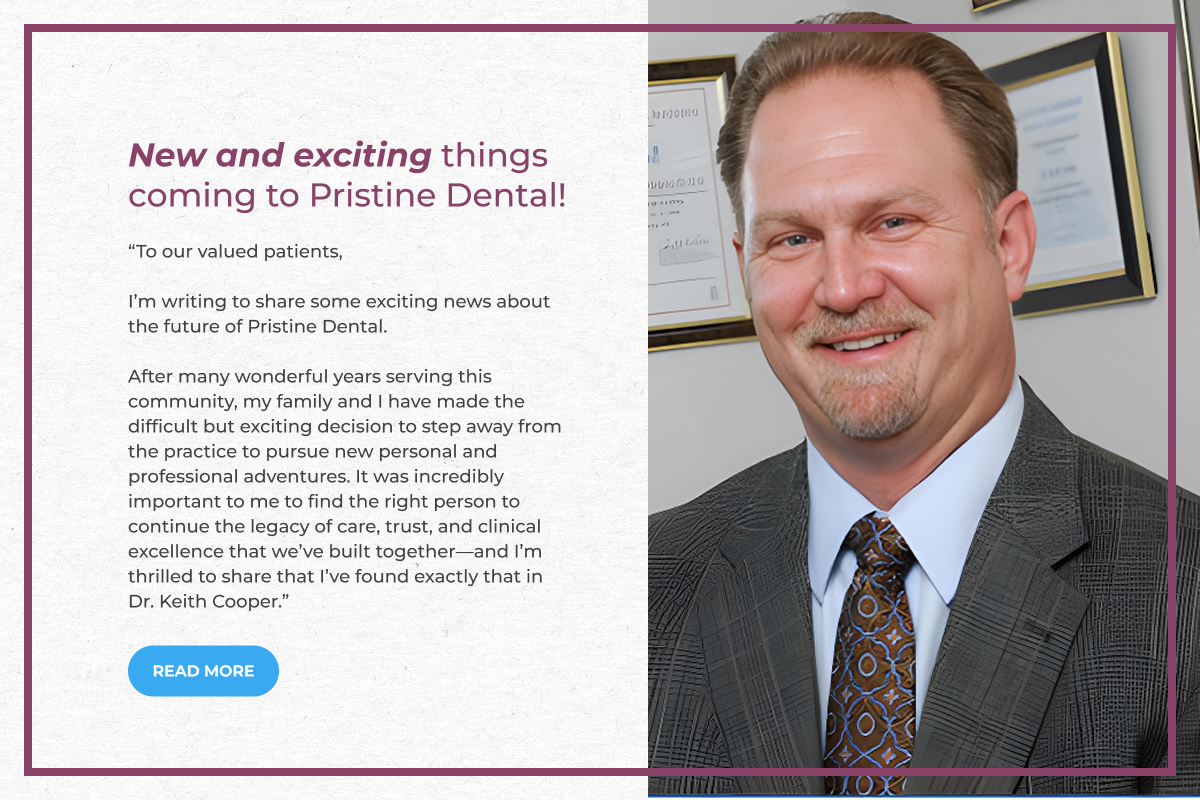Tooth Decay
and Dental Implants
Our Scottsdale Dentist Can Change Your Life with Dental Implants
Tooth decay is a vicious cycle – tooth decay leads to tooth loss. In turn, tooth loss leads to tooth decay. When you’re missing a tooth, you leave a gap in your mouth that creates a cesspool for bacteria and infection. Unfortunately, this infection can spread and lead to more tooth loss.
If you’re caught up in the vortex of tooth loss and tooth decay, you might feel isolated, but know that you’re not alone. About 92% of adults between the ages of 20-64 have cavities, and 26% of adults have untreated tooth loss. The staff of Pristine Dental and Dr. Keith Cooper in Scottsdale, AZ, want to help you get control of your tooth decay.
To schedule your appointment, contact one of the best dentists in Scottsdale today by calling (480) 935-2424.
Composition of a Tooth
 On a basic level, a human tooth is composed of two essential parts: the root and the crown. The crown is the visible part of the tooth. Most people want their tooth’s crown to be aesthetically beautiful. Much like a rock formation, the crown is layered by different tissues that have multiple functions and densities. There are 4 major layers in your tooth’s crown:
On a basic level, a human tooth is composed of two essential parts: the root and the crown. The crown is the visible part of the tooth. Most people want their tooth’s crown to be aesthetically beautiful. Much like a rock formation, the crown is layered by different tissues that have multiple functions and densities. There are 4 major layers in your tooth’s crown:
- Enamel: Enamel is the outer shell of the tooth. It’s mineral-dense and known for being the hardest substance in the human body. Enamel protects the other layers of the tooth.
- Dentin: Another highly calcified layer that helps support enamel in protecting the inner layers of the teeth. Dentin has tiny channels that allow nutrients to travel through the tooth.
- Cementum: Cementum is the last defensive layer before reaching the nerve tissue. Cementum is more porous than enamel and dentin but is still considered a hard tissue.
- Dental Pulp: The pulp is the very center of the tooth and is made up of connective tissues, nerve endings, and blood vessels. When the pulp is penetrated, it can cause intense pain and sensitivity.
How Tooth Decay Works
Many types of bacteria naturally occur in your mouth. Cavity-causing bacteria thrive on sugary foods and drinks. Over time, when bacteria aren’t removed, they produce a thick, unhealthy plaque. Some tooth decay is inevitable. Most tooth decay can be avoided through lifestyle changes like diet and better dental hygiene practices.
Sugar-consuming bacteria are highly acidic and decay the teeth by eating away the minerals in your teeth’s enamel. Oftentimes, you won’t be able to visibly see the first stages of damage, because the holes in your enamel are so small that they’re not visible to the human eye. Gradually, the holes in your enamel grow until the next layer of your teeth is exposed.
When bacteria make their way to the center of the tooth, they will come in contact with the area containing nerves and blood vessels. Irritation and infection will cause the pulp to become swollen, irritated, sensitive, or painful.
When white blood cells start moving to the area to fight infection, small pockets of pus can form to create a tooth abscess. If you’ve had an abscessed tooth before, then you know just how painful they are. If left untreated, tooth decay can snowball into loss of the tooth.
How Dental Implants Can Help
Tooth loss is a domino effect. If you lost a tooth due to trauma or dental decay, then a restoration treatment can help combat the effects of tooth decay in neighboring teeth. Don’t procrastinate when it comes to treating lost or damaged teeth. Dental implants are a viable solution, and unlike natural teeth, dental implants can’t be affected by tooth decay. Nonetheless, you’ll want to keep your gums in healthy shape by maintaining good dental hygiene. Dental implants will fill the bacteria-ridden gaps of your teeth and give you back a beautiful smile.
Close the Gap with Dental Implants
Tooth loss and tooth decay go hand in hand. Untreated tooth loss can lead to further tooth decay and a slew of health problems. At Pristine Dental, we believe in preventative dentistry. We want to protect what you have left. Dental implants help prevent further tooth loss by increasing your overall well-being and restoring your mouth to its natural setting. Still have questions about the process, benefits, or cost of dental implants? Our staff can help answer any questions and get you back on track to a healthy smile. Contact our dentist near you today at (480) 935-2424.

